 |
 |
| current issue |  |
past issues |  |
send a letter/news |  |
address update |  |
advertise |  |
about us |  |
alumni home |
Previews
Books, music, art, theater, film, and danceby Anne Downey '95G
The Woman in the Woods: Linked Stories , By Ann Williams '80, '90G
Overviews:
Books:
Backcast: Fatherhood, Fly Fishing and a River Journey through the Heart of Alaska, by Lou Ureneck '72
Ghana: An African Portrait Revisited, by Peter Randall '63
Baby, by Joseph Monninger '84G
Also of Note...
Flying Tigers: Claire Chennault and his American Volunteers, 1941-42, by Daniel Ford '54
Perl for Exploring DNA, by Mark D. LeBlanc '87 and Betsey Dexter Dyer
Cracking Up: American Humor in a Time of Conflict, by Paul Lewis '77
Legislating Indian Country: Significant Milestones in Transforming Tribalism, by Laurence Armand French '68
Gods of Asgard: A Graphic Novel Interpretation of the Norse Myths, adapted and illustrated by Erik Evensen '01
I Witness and Wait: A Novel, by Elwyn Dearborn '42
New Hampshire's General John Stark: Live Free or Die, Death is Not the Worst of Evils, by Clifton La Bree '55
Captured!: The Betty and Barney Hill UFO Experience: The True Story of the World's First Documented Alien Abduction, by Stanton T. Friedman and Kathleen Marden '71
Broken Hallelujahs: Poems, by Sean Thomas Dougherty '92
Searching for Joy, by Tim Barretto '74, '82G
Food-Borne Parasitic Zoonoses, by Bernard Fried '56
The Woman in the Woods: Linked Stories
See at amazon.com
Ann Joslin Williams' first book of short stories, The Woman in the Woods: Linked Stories (Eastern Washington University Press, 2007), is a collection about love and loss in the life of one New Hampshire family. Her writing is as textured as the landscape she so closely observes—the trees, the fields, the stones all have life in her fiction—and the small moments in her sentences explode into whole worlds. Climbing down the dark mountain that is her home, her protagonist, Kate Hagen, thinks, "Though I'm still inching along, rock under my feet, I have the feeling that I'm scaling the dark wall of the sky. I am walking my way down the shell of the stratosphere, following the curve of the globe. Below is a black ocean, full of fire-spouting creatures and drowning yellow stars. My lover has vanished. My husband, my parents. My son. I lift my arms to fly."

Williams comes from a hunting family, and as a child, she spent a lot of time in the woods. Writing, too, is a family legacy. Her father was Thomas Williams, Esquire columnist, National Book Award winner and much-loved professor of creative writing at UNH; he died of lung cancer in 1990. As an undergraduate, she took her father's classes—"We pretended we didn't know each other"—and although he advised her not to pursue the writer's difficult path, it is as much a part of her nature as interpreting the woods. Later, her father became one of her readers, and when he didn't like some of the names for places she used in her fiction, he told her to take his. Mount Cascom and Leah, N.H., the setting of her book, is the same setting in her father's collection of stories, Leah, New Hampshire.
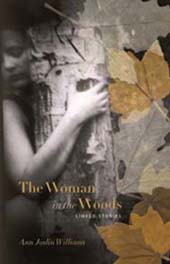
"When I was young and read my father's novels, there was definitely some astonished discomfort—'Is this my Dad?! That's my bedroom he's describing, and he's killed us off!'" she says. "But later, I studied his craft—his stories are so smart, and he had quite a mature imagination at a very young age."
After earning a master's in creative writing from UNH, she earned an M.F.A. from the Iowa Writers' Workshop and then received a Wallace Stegner Fellowship at Stanford. As an assistant professor at the California College of the Arts, she developed and chaired the M.F.A. in writing program. When she was ready to come back East, there happened to be a visiting writer position open at UNH, although ending up in Durham doesn't feel like happenstance. "It does seem a little like I'm taking this cosmic journey, following in my father's footsteps," she says. "I was born in Iowa City when my dad was getting his degree from the Writers' Workshop, and I returned years later to get my own degree, so I guess it was inevitable that I end up back here at some point." ~
| Overviews: Books |
|
|
Fatherhood, Fly Fishing and a River Journey through the Heart of Alaska
by Lou Ureneck '72, Winner of the 2007 National Outdoor Book Award, this is a moving memoir about the author's failed marriage and his attempt to reclaim his teenage son's trust. Ureneck is chair of the journalism department at Boston University. |
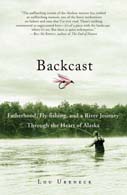 |
|
Ghana: An African Portrait Revisited
by Peter Randall '63, editor and photographer, In the footsteps of modernist photographer and filmmaker Paul Strand, Randall and five photographer friends (including Charter Weeks '65, Tim Gaudreau '92 and former UNH photographer Gary Samson), traveled to Ghana on its 50th birthday and captured stunning images of its people, landscape and vibrant, colorful culture. |
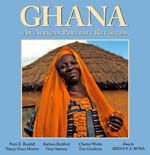 |
|
Baby
by Joseph Monninger '84G, Baby is a smart, spirited teenager who prefers stealing and sleeping on the streets to living in foster homes. But when a family gives her the opportunity to run their sled dogs, something shifts in her heart. This is a spare, beautifully written novel for readers both young and young-at-heart, filled with courage and hope. |
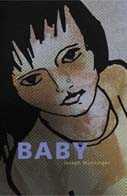 |
|
Also of Note... Flying Tigers: Claire Chennault and his American Volunteers, 1941-42 by Daniel Ford '54, This is an updated and completely revised edition of Ford's prize-winning 1991 history of the WWII American pilots known as the "Flying Tigers", one of America's most famous combat forces, who defeated Japan's "Imperial Wild Eagles" in the skies over Rangoon. Ford has written several books about war, is a resident scholar at UNH, and writes for the Wall Street Journal. |
 |
|
Perl for Exploring DNA
by Mark D. LeBlanc '87 and Betsey Dexter Dyer, Perl is a programming language used in biological sequence analysis, and the authors, both professors at Wheaton College, offer this hands-on guide, which uncovers why Perl is "the language of choice when identifying patterns in strings of text." |
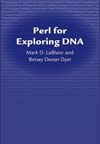 |
|
Cracking Up: American Humor in a Time of Conflict by Paul Lewis '77, Lewis, who is professor of English at Boston College, thoughtfully analyzes trends in humor culture since 1980, and proving that purposeful comedy evokes complex feelings in the American populace. |
 |
|
Legislating Indian Country: Significant Milestones in Transforming Tribalism by Laurence Armand French '68, The author is a psychologist and a senior research analyst at JusticeWorks at UNH. His book traces the history of unjust U.S. policy toward American Indians since the 16th Century, and shows how a more subtle form of exploitation continues today. |
 |
|
Gods of Asgard: A Graphic Novel Interpretation of the Norse Myths
adapted and illustrated by Erik Evensen '01 Evensen is a freelance illustrator and graphic designer, and won a self-publishing grant from the Xeric Foundation (which provides financial assistance to comic book creators) to produce this book, which is based on translations of Norse myths about gods Thor, Odin, Loki and others. |
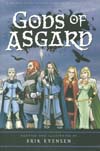 |
|
I Witness and Wait: A Novel
by Elwyn Dearborn '42, XLibris, 2006. This first novel takes place in the small town of Overlook, New Hampshire in the 1930s, and focuses on the coming-of-age of Paul Prescott, a 14-year-old who is accused of the murder of a local schoolteacher.
|
 |
|
New Hampshire's General John Stark: Live Free or Die, Death is Not the Worst of Evils
by Clifton La Bree '55, Peter E. Randall Publisher, 2007. Stark served with the famous Rogers' Rangers during the French and Indian War, and was among the most successful military commanders of his age. This biography takes a fresh look at his contributions.
|
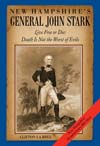 |
|
Captured!: The Betty and Barney Hill UFO Experience: The True Story of the World's First Documented Alien Abduction
by Stanton T. Friedman and Kathleen Marden '71, New Page Books, 2007. The 1961 alleged UFO abduction of Betty and Barney Hill in the White Mountains drew worldwide attention. Marden, who is their niece, was 13 at the time, and was a primary witness to the evidence of the encounter and the aftermath. This book details the Hills' lives from sociological and biographical perspectives, and presents new historical data.
|
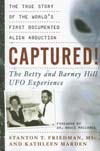 |
|
Broken Hallelujahs: Poems
by Sean Thomas Dougherty '92, BOA Editions, 2007. Dougherty teaches in the BFA Program for Creative Writing at Penn State Erie, and his poetry is written in experimental and improvisational forms, inspired by many different literary and musical figures.
|
 |
|
Searching for Joy
by Tim Barretto '74, '82G, Beech River Books, 2007. Barretto's first novel is a sensitive portrayal of a father's relationship with his son, and how it changes in the wake of prostate cancer.
|
 |
|
Food-Borne Parasitic Zoonoses
by Bernard Fried '56, Springer, 2007. Zoonoses are parasites in animals that are transmissible to humans, and this book focuses on those that are transmitted by fish, plant and invertebrate foods; it would be of particular interest to microbiologists and other scientists, and professionals in the fields of public health, infectious disease, and food safety and science. |
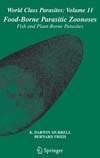 |
Anne Downey '95G, a freelance writer who lives in Eliot, Maine, received her Ph.D. in English from UNH.

